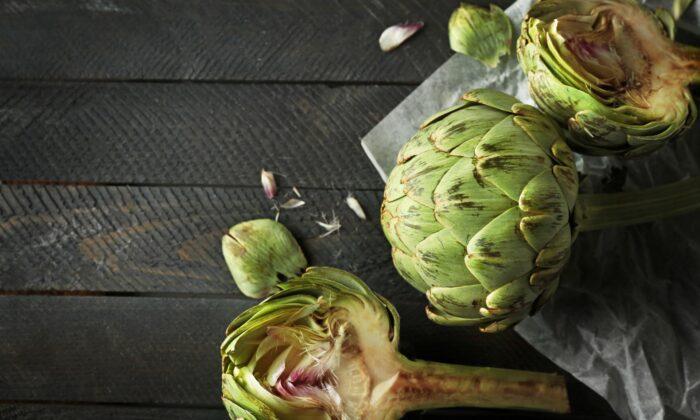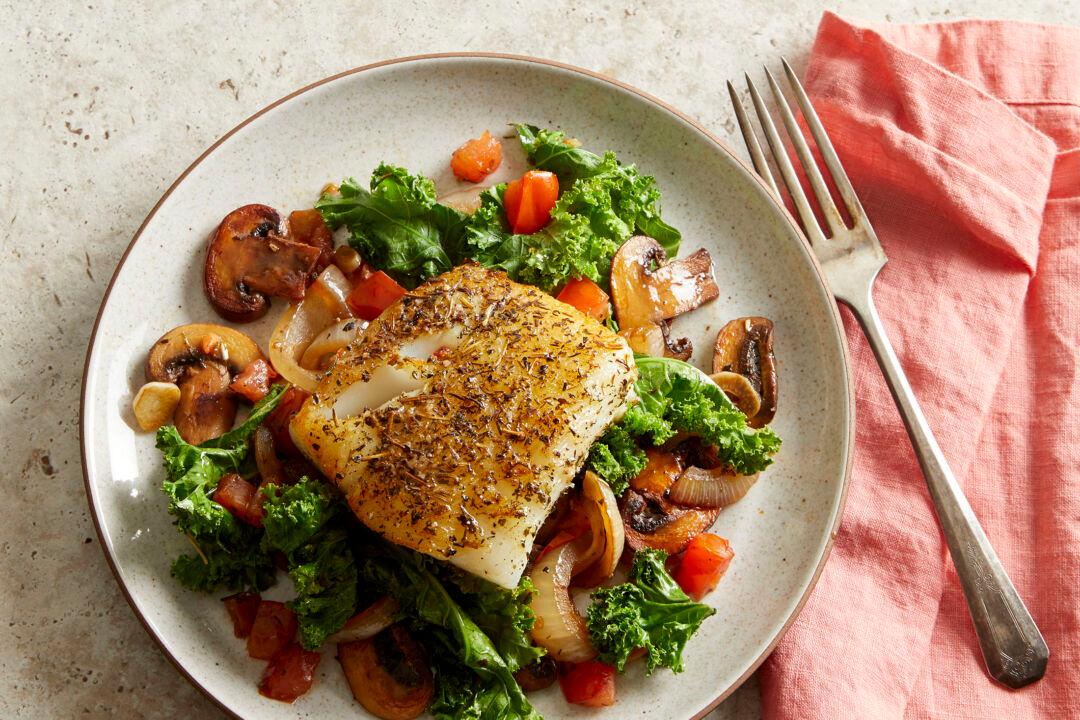The best thing about seasonal produce is that mother nature always provides us with excellent sources of the nutrients that our body needs at exactly the right time. Springtime calls to mind artichokes, asparagus, and fresh greens—just what our body needs to detoxify from the colder months.
Artichokes in particular help us prepare our bodies for the warmer months ahead. Artichokes are technically not vegetables, but thistles, and each of the tender leaves that we enjoy eating is actually part of a flower that has yet to bud. Full of mineral salts such as calcium, potassium, phosphorus, and magnesium, artichokes help protect our livers and kidneys while improving their functionality and providing beneficial fiber that helps to lower bad cholesterol levels. The inulin found in artichokes also helps the body to maintain even blood sugar levels.
When I think of artichokes, I am immediately transported to Rome. Of all of the places that I have lived and worked in, it is the Eternal City that celebrates artichokes the most.
If you happen to be lucky enough to find yourself in Rome from mid-February to May, I highly recommend taking a stroll through the Campo dei Fiori neighborhood in the morning to visit the famous market. Full of exquisite fresh flowers, produce, and yes, tourist souvenirs, the mercato also has the greatest variety of the most breathtaking artichokes I have ever seen. There are even festivals dedicated to the Roman artichoke.
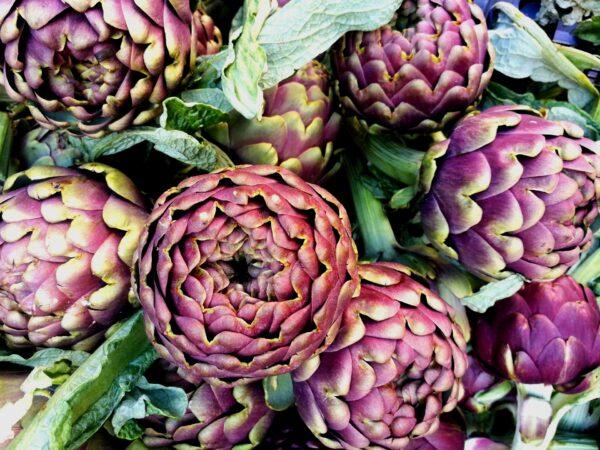
In pre-Roman times, sagre, ancient agricultural festivals whose name literally means “sacred,” were held in honor of various harvests. The pagan gods would be worshipped for abundant crops, and communities would come together to prepare the particular produce being honored in as many ways as they could.
Fast forward more than 2000 years, and sagre are still held in Italy for various types of local harvests and regional specialties—everything from garlic and truffles, to asparagus and artichokes, to polenta, risotto, honey, and chestnuts.
During the sagre, people congregate, usually in a particular piazza, to kick off the festivities, and vendors set up tables selling their recipes and local products. There are games for the children and contests for the adults. Sometimes famous chefs and celebrities are called upon to bring attention to the events.
This year, the Sagra del Carciofo di Roma, or the Sagra of the Roman Artichoke, will be held from April 24 to 25 in the outskirts of Rome, where various types of artichokes are grown. Cooks and restaurateurs will offer entire menus based on Romanesco artichokes, from the appetizers to the after-dinner drinks. Rome’s iconic Jewish-style golden-fried artichokes, artichoke lasagna, ravioli filled with artichokes, roasted lamb with artichokes, artichoke-infused cacio e pepe, and traditional Roman-style braised artichokes are just a few of the dishes that will be on offer.
While the thought of eating any one of those dishes makes my heart sing, one of my favorite ways to prepare artichokes is also one of the simplest: boiled until tender and sautéed with extra-virgin olive oil, garlic, and crushed red chile flakes.
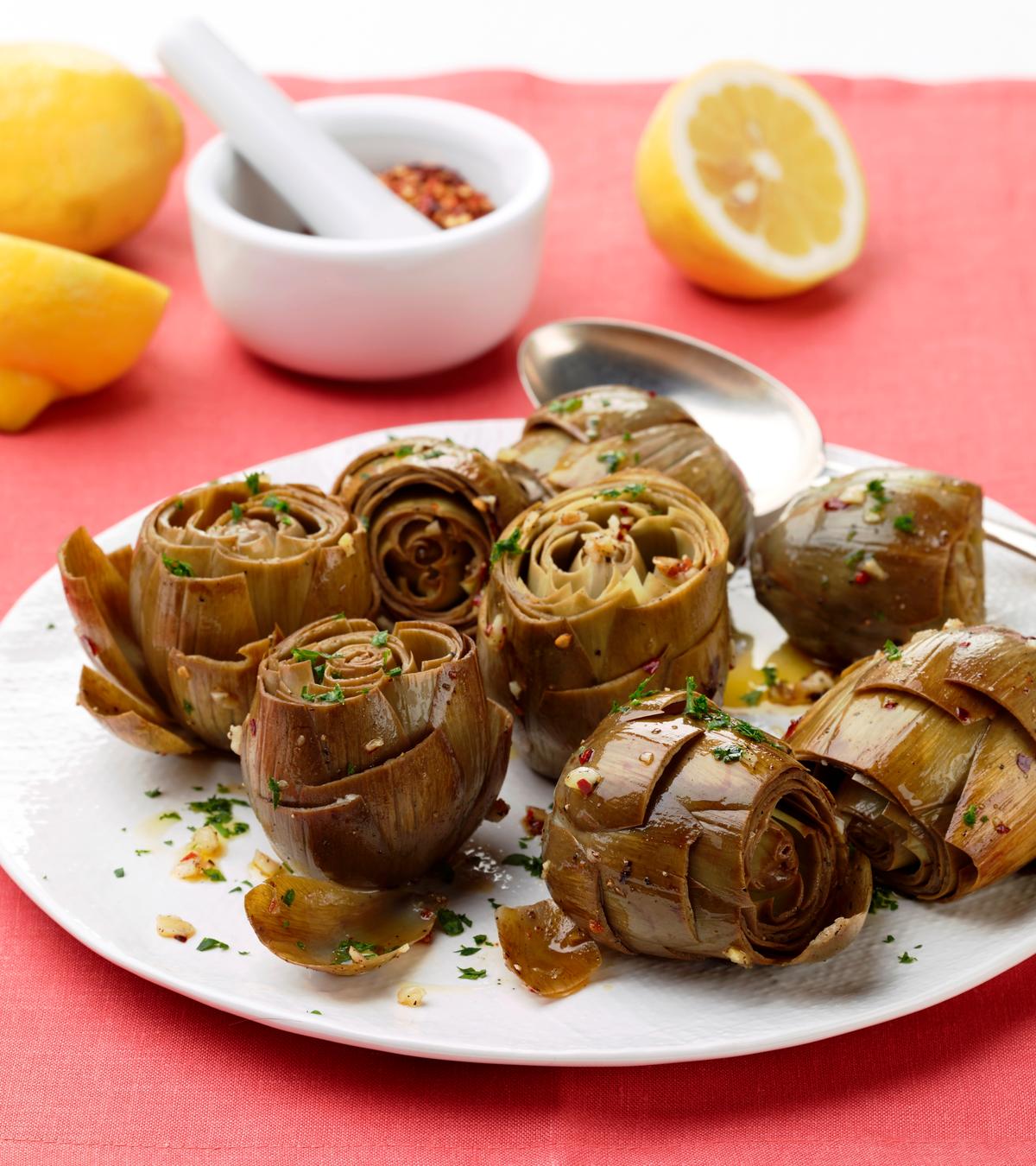
Finding Artichokes
I was so spoiled by the artichokes when I lived in Rome that I began to take them for granted. When I returned to the United States, however, they became one of the ingredients I missed the most. I once went to a popular, upscale food market in D.C. to purchase fresh artichokes for a class, hoping to relive some of those artichoke-studded memories in Rome, only to find large globe artichokes already past their prime selling for $2 each.My advice to artichoke lovers nowadays is to purchase them in spring from your farmers market if you can. If that isn’t an option, keep a close eye out for them at your local supermarket and get them at their peak. Look for artichokes that are firm and compact, with fresh, green leaves and no bruises. Avoid ones that have big black marks or are soft in any areas.
Artichokes With Garlic and Oil (Carciofi all’aglio e Olio)
In addition to their creamy texture and buttery flavor, artichokes contain healthful antioxidants. If you’ve never worked with fresh artichokes before, don’t be intimidated. The steps to prepare them are simple, and after cooking them once, you’ll be a pro. When baby artichokes are in season, try using those—they cook in only half the time. When fresh artichokes aren’t in season, substitute canned, reduced-sodium artichoke hearts or frozen hearts.In Rome, freshly sautéed artichokes like these are tossed into hot spaghetti and garnished with finely chopped fresh mint. It’s a simple yet divine combination!
Prep Time: 15 minutes Cooking Time: About 35 minutes
- 4 small or 8 baby artichokes
- 2 lemons, juiced, divided
- 3 tablespoons Amy Riolo Selections Extra Virgin Olive Oil, or other
- 4 cloves garlic, minced
- 1/4 teaspoon unrefined sea salt
- 1/8 teaspoon freshly ground black pepper
- Pinch crushed red chile flakes
- 1 tablespoon finely chopped fresh flat-leaf parsley
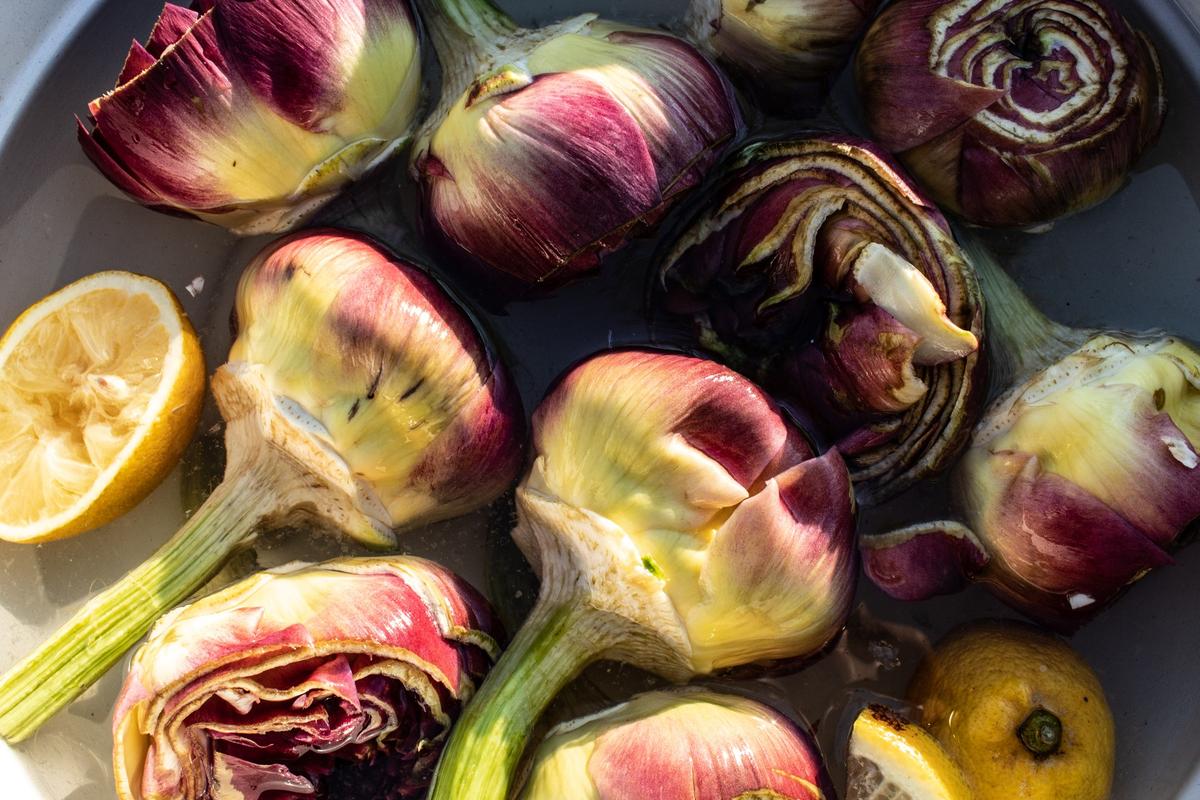
Bring a large pot of water to a boil, and add cleaned artichokes. Bring back to a boil on high heat. Reduce heat to medium-low and simmer artichokes 25 to 30 minutes (10 to 15 minutes if using baby artichokes), or until tender. Drain artichokes well, pat dry with a paper towel, and set aside.
In a large skillet, heat olive oil over medium heat. Add garlic and sauté until garlic begins to release its aroma, approximately 1 minute. Add artichokes, turn to coat in oil, and season with salt, pepper, and crushed red chile flakes. Sprinkle with parsley and serve warm.
Calories 150 | Calories from Fat 90 Total Fat 10g | Saturated Fat 1.4g | Trans Fat 0.0g Cholesterol 0mg Sodium 210mg Potassium 420mg Total Carbohydrate 14g | Dietary Fiber 6g | Sugars 2g Protein 4g Phosphorus 95mg

